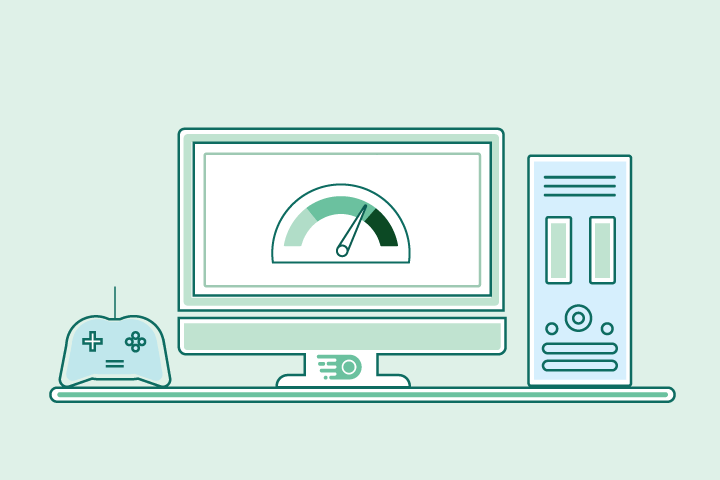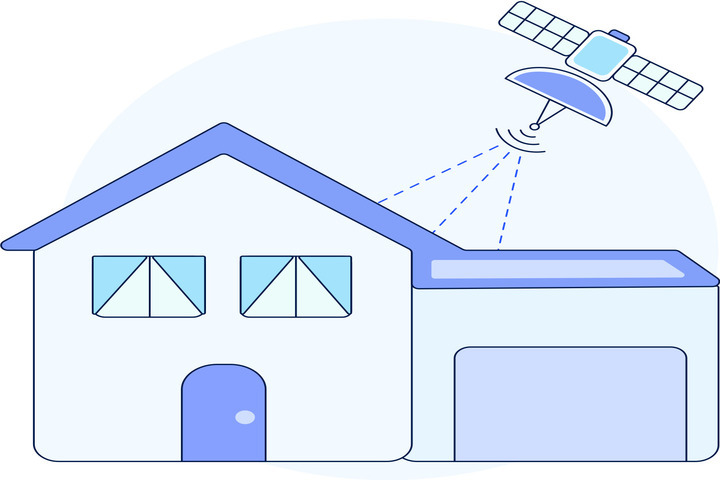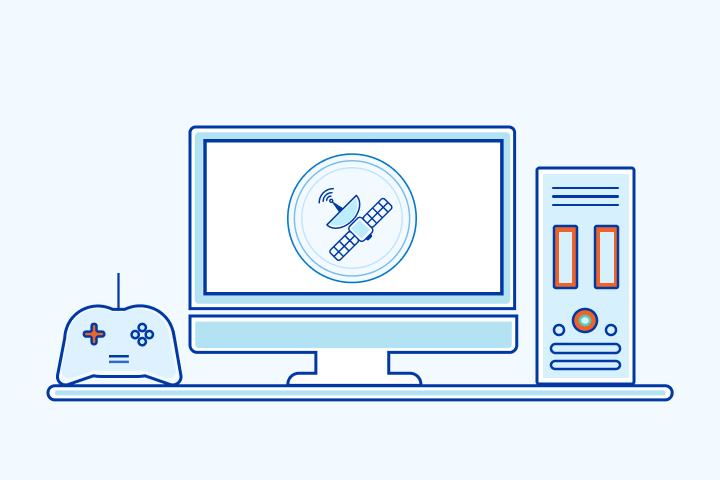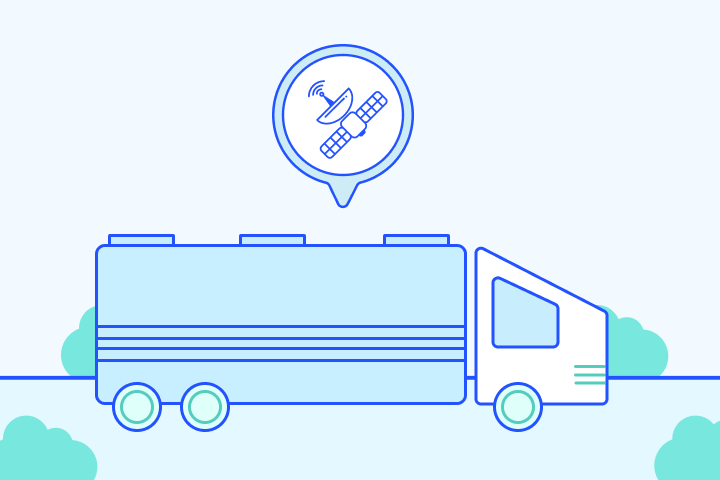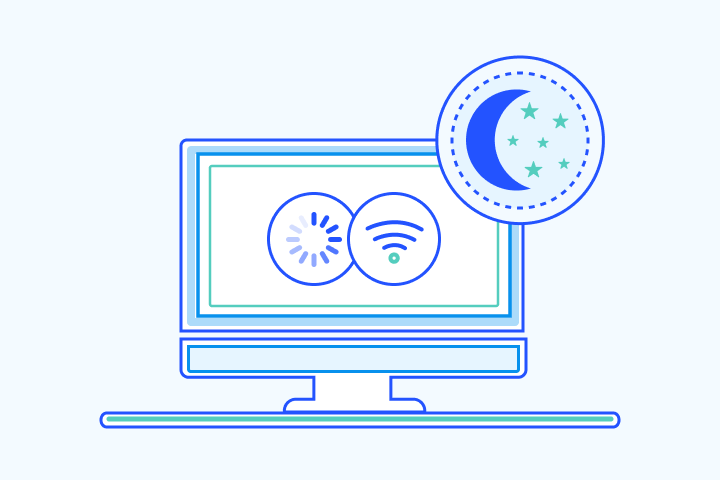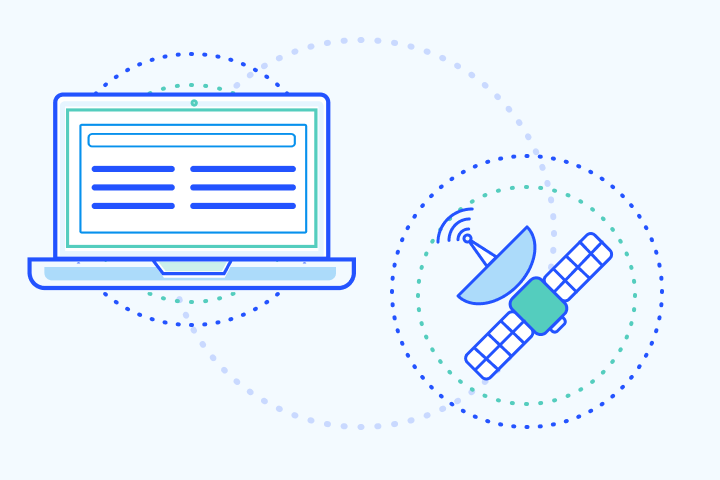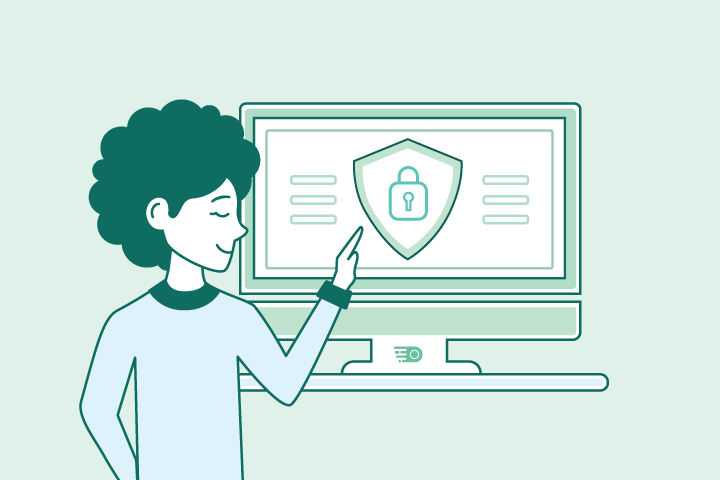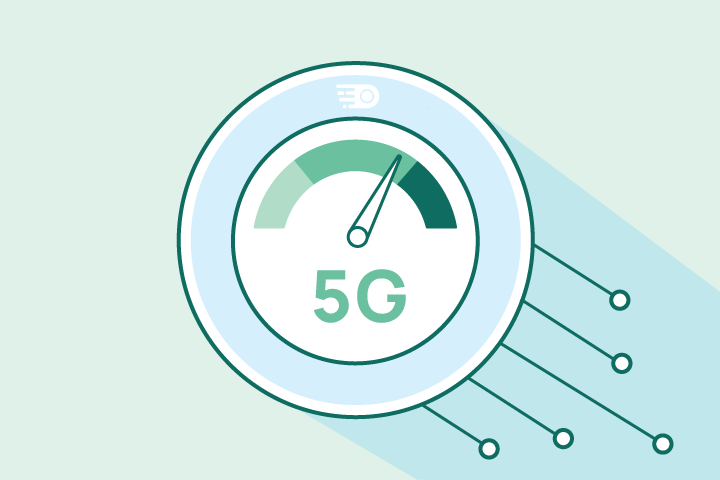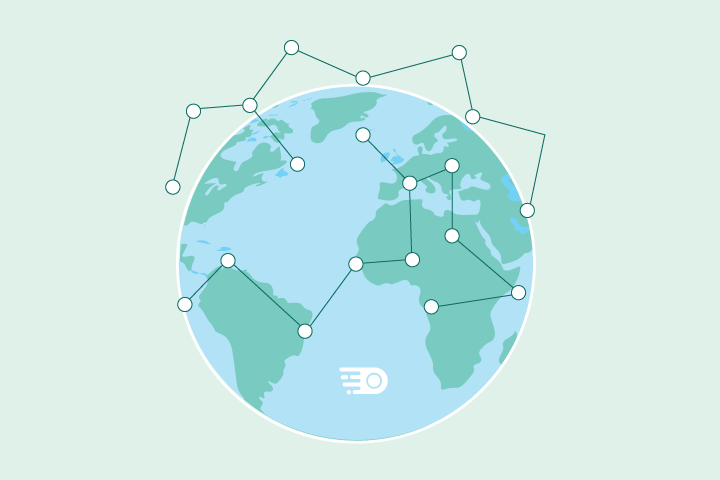How to Get Internet Without a Phone Line or Cable
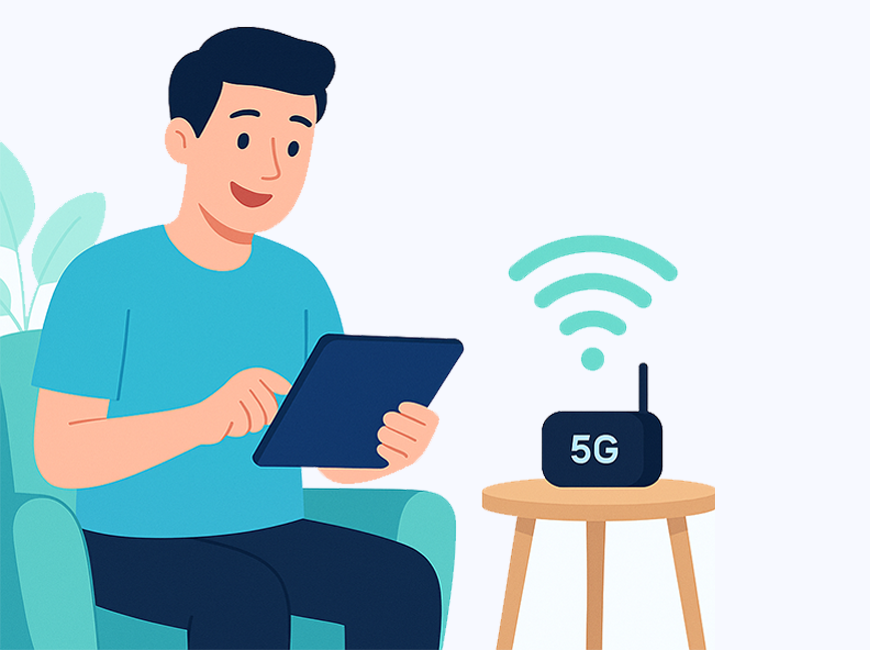
HighSpeedOptions prides itself on providing honest, quality content. While we may be compensated when you make a purchase through links on our site, all opinions are our own. Here's how we make money.
Table of Contents
Getting internet service once meant you also had to sign up for a phone line or a cable TV package. Thankfully, those days are over. You now have several options for getting internet without a phone line or cable, which can save you money and give you more flexibility.
Navigating these alternatives can feel overwhelming. At HighSpeedOptions, we help people compare providers and understand the best choices for their needs. This guide will walk you through all the no phone line internet options—from satellite and 5G home internet to fiber—to help you find the right fit for your home and budget. We’ll explore the pros and cons of each, including providers like EarthLink Internet, so you can make an informed decision.
What Does “Internet Without a Phone Line or Cable” Mean?
Getting internet without a phone line or cable simply means you are purchasing a standalone internet service. You are not required to bundle it with a landline phone service or a cable TV subscription. This approach gives you the freedom to choose only the service you need.
One common term you might encounter is Naked DSL. This refers to a DSL internet connection that doesn’t include a voice service package. While traditional DSL often uses existing phone lines, Naked DSL offers broadband without a phone plan, providing a direct internet connection. Most modern internet technologies, like fiber, 5G, and satellite, are naturally standalone and don’t require any bundling.
Your Options for Internet Without a Cable or Phone Line
A mobile hotspot allows you to share your smartphone’s cellular data connection with other devices like laptops and tablets. You can also purchase a dedicated mobile hotspot device for a more stable and powerful connection.
Mobile Hotspot
- Pros: Highly portable, instant setup, great for travel.
- Cons: Often have strict data caps, can drain your phone’s battery quickly, and may not be as fast or reliable as a dedicated home internet connection.
| Provider | Typical Download Speed | Price Range |
| Verizon | 5–100 Mbps (in 5G areas) | $40–$80/mo. + device |
| AT&T | 10–100 Mbps | $25–$80/mo. + device |
| T-Mobile | 10–100 Mbps | $30–$50/mo. + device |
| Provider | Verizon |
| Typical Download Speed | 5â100 Mbps (in 5G areas) |
| Price Range | $40â$80/mo. + device |
| Provider | AT&T |
| Typical Download Speed | 10â100 Mbps |
| Price Range | $25â$80/mo. + device |
| Provider | T-Mobile |
| Typical Download Speed | 10â100 Mbps |
| Price Range | $30â$50/mo. + device |
4G/5G Home Internet
This option uses cellular networks to deliver internet to your home through a dedicated router. It’s a popular wireless internet choice, especially in areas with good cell reception. As of April 2025, nearly 12% of U.S. households have connected to a 5G home internet network, according to Horowitz Research.
- Pros: Often faster than mobile hotspots, simple plug-and-play setup, no installation appointments needed.
- Cons: Performance can vary depending on your signal strength and network congestion.
Providers like EarthLink offer Wireless Home Internet solutions that fall into this category, giving you a reliable connection using the power of the cellular network.
| Provider | Typical Download Speed | Price Range |
| EarthLink Wireless | 25–100 Mbps | $49.95-$84.95mo. |
| T-Mobile 5G | 33–245 Mbps | $35–$50/mo. |
| Verizon 5G | 85–300 Mbps | $50–$70/mo. |
| AT&T 5G | 40–140 Mbps | $55–$70/mo. |
| Provider | EarthLink Wireless |
| Typical Download Speed | 25â100 Mbps |
| Price Range | $49.95-$84.95mo. |
| Provider | T-Mobile 5G |
| Typical Download Speed | 33â245 Mbps |
| Price Range | $35â$50/mo. |
| Provider | Verizon 5G |
| Typical Download Speed | 85â300 Mbps |
| Price Range | $50â$70/mo. |
| Provider | AT&T 5G |
| Typical Download Speed | 40â140 Mbps |
| Price Range | $55â$70/mo. |
Fixed Wireless Internet
Fixed wireless internet transmits radio signals from a nearby tower directly to a receiver antenna installed at your home. It’s a great internet option for rural areas where wired connections are unavailable.
- Pros: Provides solid coverage in many rural and suburban areas, generally offers stable speeds.
- Cons: Requires a clear line of sight to the provider’s tower, and availability is often limited to specific regions.
| Provider | Typical Download Speed | Price Range |
| Rise Broadband | 25–250 Mbps | $35–$65/mo. |
| AT&T Fixed Wireless | 25–100 Mbps | $50–$70/mo. |
| Starry Internet | 50–200 Mbps | $30–$50/mo. |
| Provider | Rise Broadband |
| Typical Download Speed | 25â250 Mbps |
| Price Range | $35â$65/mo. |
| Provider | AT&T Fixed Wireless |
| Typical Download Speed | 25â100 Mbps |
| Price Range | $50â$70/mo. |
| Provider | Starry Internet |
| Typical Download Speed | 50â200 Mbps |
| Price Range | $30â$50/mo. |
Satellite Internet
Satellite internet is available almost anywhere in the U.S., making it a go-to for many rural homes. It works by sending and receiving signals from a satellite in orbit. There are two main types: traditional geostationary satellites and newer low-Earth orbit (LEO) constellations like Starlink.
- Pros: Near-universal availability.
- Cons: Higher latency (lag) than other connection types, can be affected by weather, and is often more expensive.
For those in remote locations, EarthLink satellite internet is a strong contender, offering service where other providers can’t reach.
| Provider | Typical Download Speed | Price Range |
| EarthLink Satellite | 25–100 Mbps | $50–$150/mo. |
| HughesNet | 50–100 Mbps | $50–$90/mo. |
| Viasat | 25–150 Mbps | $50–$150/mo. |
| Starlink (LEO) | 50–250 Mbps | $120/mo. + hardware |
| Provider | EarthLink Satellite |
| Typical Download Speed | 25â100 Mbps |
| Price Range | $50â$150/mo. |
| Provider | HughesNet |
| Typical Download Speed | 50â100 Mbps |
| Price Range | $50â$90/mo. |
| Provider | Viasat |
| Typical Download Speed | 25â150 Mbps |
| Price Range | $50â$150/mo. |
| Provider | Starlink (LEO) |
| Typical Download Speed | 50â250 Mbps |
| Price Range | $120/mo. + hardware |
Fiber-Only Internet
Fiber-optic internet uses thin strands of glass to transmit data as light, making it the fastest and most reliable option available today. A recent FCC report noted that fiber now accounts for 28 million U.S. broadband connections as of 2023.
- Pros: Symmetrical gigabit speeds (equal download and upload), extremely reliable, perfect for streaming, gaming, and remote work.
- Cons: Availability is still limited, mainly to urban and suburban areas.
Providers like EarthLink Fiber Internet offer standalone fiber plans, so you can get incredible speeds without needing to bundle other services.
| Provider | Typical Download Speed | Price Range |
| EarthLink Fiber | 100 Mbps – 5 Gbps | $60–$190/mo. |
| AT&T Fiber | 300 Mbps – 5 Gbps | $55–$180/mo. |
| Verizon Fios | 300 Mbps – 1 Gbps | $50–$90/mo. |
| Provider | EarthLink Fiber |
| Typical Download Speed | 100 Mbps â 5 Gbps |
| Price Range | $60â$190/mo. |
| Provider | AT&T Fiber |
| Typical Download Speed | 300 Mbps â 5 Gbps |
| Price Range | $55â$180/mo. |
| Provider | Verizon Fios |
| Typical Download Speed | 300 Mbps â 1 Gbps |
| Price Range | $50â$90/mo. |
Niche and Hybrid Solutions
For those constantly on the move, there are specialized solutions designed for portable WiFi. These are popular for RV internet and off-grid setups, offered by providers like Nomad Internet and OTR Mobile. They often combine different technologies to provide connectivity wherever you are.
Comparing Your Internet Options at a Glance
Here’s a side-by-side comparison to help you quickly weigh your choices.
| Connection Type | Avg. Speed Range | Avg. Price Range | Availability | Pros | Cons |
| Mobile Hotspot | 5–100 Mbps | $25–$80/mo. + device | Urban/Suburban | Portable, easy setup | Data caps, slower than home broadband |
| 4G/5G Home Wireless | 25–300 Mbps | $35–$75/mo. | Growing nationwide | Affordable, fast, no wiring | Signal-dependent, congestion possible, potential data caps |
| Fixed Wireless | 25–250 Mbps | $35–$70/mo. | Rural + Suburban | Good rural option, stable speeds | Requires antenna/line of sight |
| Satellite | 25–250 Mbps | $50–$150/mo. | Nationwide (rural) | Available almost everywhere | High latency, weather interference |
| Fiber | 100 Mbps – 5 Gbps | $30–$190/mo. | Urban/Suburban hubs | Fastest speeds, reliable | Limited availability |
| Niche/Hybrid (RV) | 10–100 Mbps | $50–$120/mo. | Mobile/Off-grid | Flexible, good for travelers | Expensive for speed, limited support |
| Connection Type | Mobile Hotspot |
| Avg. Speed Range | 5â100 Mbps |
| Avg. Price Range | $25â$80/mo. + device |
| Availability | Urban/Suburban |
| Pros | Portable, easy setup |
| Cons | Data caps, slower than home broadband |
| Connection Type | 4G/5G Home Wireless |
| Avg. Speed Range | 25â300 Mbps |
| Avg. Price Range | $35â$75/mo. |
| Availability | Growing nationwide |
| Pros | Affordable, fast, no wiring |
| Cons | Signal-dependent, congestion possible, potential data caps |
| Connection Type | Fixed Wireless |
| Avg. Speed Range | 25â250 Mbps |
| Avg. Price Range | $35â$70/mo. |
| Availability | Rural + Suburban |
| Pros | Good rural option, stable speeds |
| Cons | Requires antenna/line of sight |
| Connection Type | Satellite |
| Avg. Speed Range | 25â250 Mbps |
| Avg. Price Range | $50â$150/mo. |
| Availability | Nationwide (rural) |
| Pros | Available almost everywhere |
| Cons | High latency, weather interference |
| Connection Type | Fiber |
| Avg. Speed Range | 100 Mbps â 5 Gbps |
| Avg. Price Range | $30â$190/mo. |
| Availability | Urban/Suburban hubs |
| Pros | Fastest speeds, reliable |
| Cons | Limited availability |
| Connection Type | Niche/Hybrid (RV) |
| Avg. Speed Range | 10â100 Mbps |
| Avg. Price Range | $50â$120/mo. |
| Availability | Mobile/Off-grid |
| Pros | Flexible, good for travelers |
| Cons | Expensive for speed, limited support |
FAQs: Internet without Phone Line
Yes, absolutely. Modern internet options like fiber, satellite, fixed wireless, and 5G home internet do not require a landline phone service. You can purchase these as standalone internet plans.
Satellite internet and fixed wireless are typically the best and most widely available options for rural internet without cable. Satellite offers near-universal coverage, while fixed wireless can provide stable speeds if you have a clear line of sight to a provider’s tower.
Yes. Most 5G home internet plans offer speeds between 100–300 Mbps, which is more than enough to stream movies and shows in HD and even 4K on multiple devices at once.
Fiber internet is significantly faster than satellite internet. Fiber plans can reach speeds of 1–5 Gbps (1,000–5,000 Mbps), while satellite internet speeds generally range from 25–250 Mbps.
It can be, but it has limitations. The high latency (delay) of satellite internet can make real-time activities like video calls and online gaming challenging. Weather can also cause service interruptions. For many remote work tasks, it works well, but it may not be ideal for jobs requiring constant, low-latency video conferencing.
Find the Best Fit for Your Needs
With so many alternatives to cable and phone line internet, the best choice comes down to your location, budget, and how you use the internet.
- For rural users: Satellite internet or fixed wireless are often the most reliable options where wired connections are scarce.
- For mobile-heavy users and travelers: A mobile hotspot or a 5G home internet plan offers the flexibility and performance you need.
- For speed-focused users: If it’s available in your area, fiber internet is unmatched for speed and reliability, making it ideal for gamers, streamers, and remote workers.
By understanding these different types of internet without a phone line, you can find a plan that delivers the performance you need at a price you can afford.
Find providers in your area
Table of Contents



